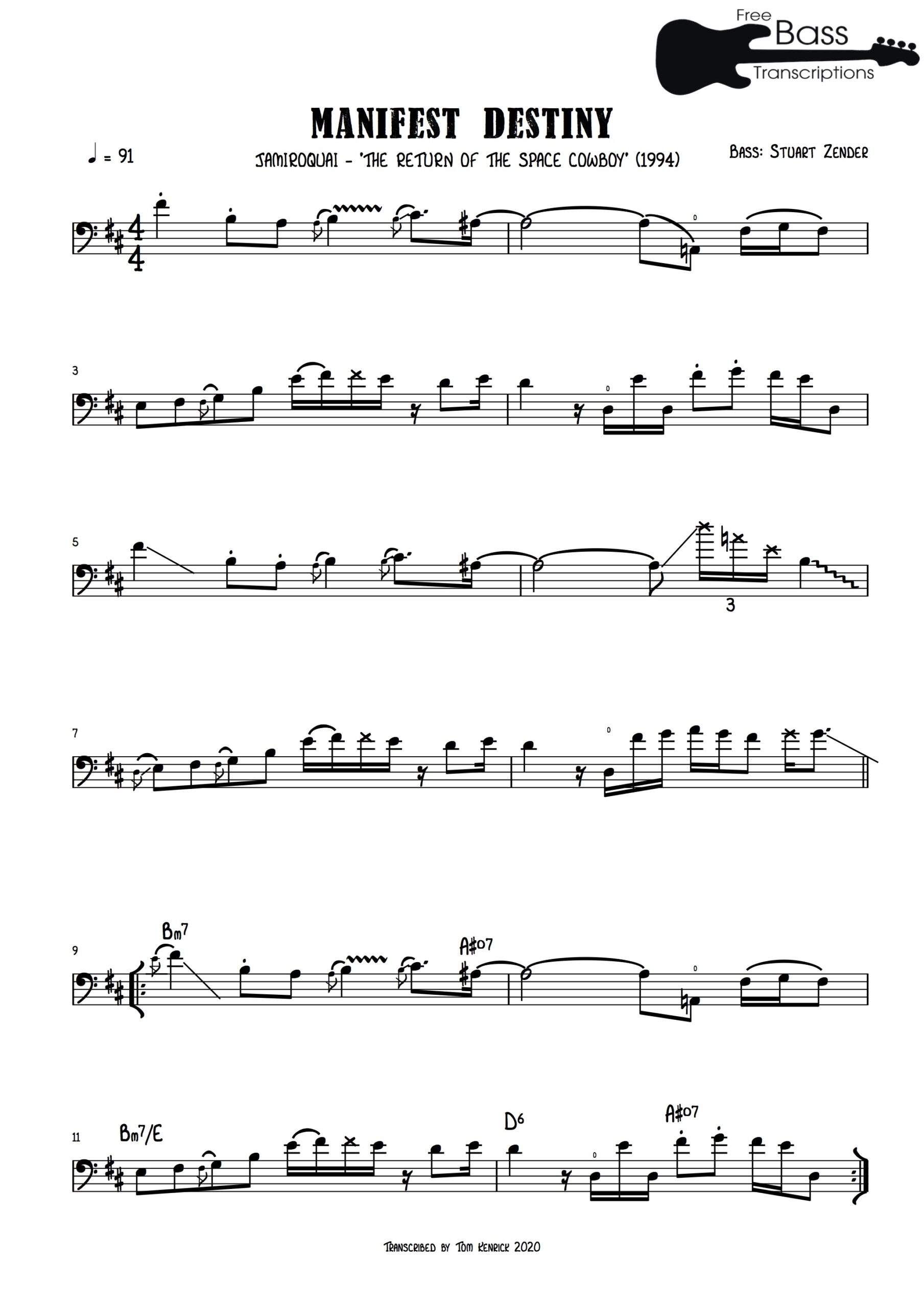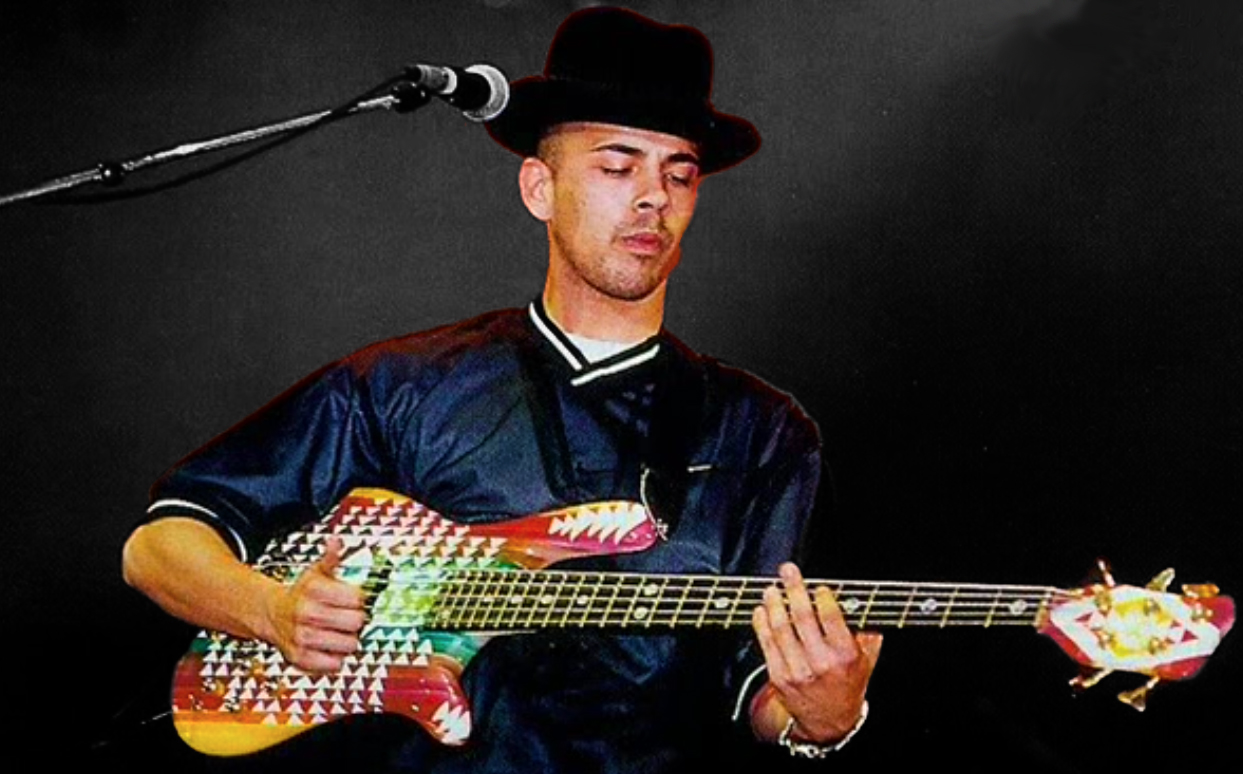Stuart’s Second Helping
We’ve already heard from Jamiroquai twice in this series (GOTW #8: ‘Whatever It Is, I Just Can’t Stop’ and GOTW #22: ‘Runaway’) and – as much as I want this series to be as wide-ranging as possible – it’s fair to say that some bands have a disproportionate amount of ‘what was that?’ bass moments in their back catalogue. So, here we are with another piece of Stuart Zender’s bass legacy, taken from the band’s second album The Return of the Space Cowboy (1994).
‘Manifest Destiny’ might seem an odd choice for a Groove Of The Week post; it’s not really a groove in the traditional sense of the word, and there are plenty of other Jamiroquai tracks worth a look (‘Don’t Give Hate a Chance’, anyone?), but Stuart Zender’s bassline showcases a rare opportunity for us to present a melody in the upper register of the fretboard without venturing into bass solo territory – we’re still playing a set part and supporting the song.
The video lesson below walks through the melody and harmony of ‘Manifest Destiny’ bar-by-bar:
For those of us that spend 99% of our time below the seventh fret, where most day-to-day bass playing happens, being given a melodic spotlight moment can be daunting; the bass can feel very different in the higher register, and I find that the fretting hand has to be extra vigilant in order to sculpt every single note with the desired effect. ‘Manifest Destiny’ is also an excellent study in fretting hand articulation – the way that the notes are played holds equal importance as the notes themselves. Careful listening will help you to discern the subtle ways that Stuart Zender uses varied note lengths, slides, hammer-ons and vibrato to make the line really sing out.

The harmony of ‘Manifest Destiny’ is also a level above most pop songs; this is to be expected the clear influence of 1970s jazz-funk artists including Roy Ayers, Stevie Wonder, Lonnie Liston Smith and The Headhunters that shine through in Jamiroquai’s music. The main harmonic accompaniment to the bass melody comes from the piano, which keeps an almost consistent voicing in the right hand while the changing bass notes provide movement:

The third chord voicing is worth a mention – the piano plays a chord which is essentially Bm7/E, which creates an Em11 tonality when taken into context with the G natural in the bass part at this point.
Diminishing Returns
The A# diminished 7 chord works in this context because it’s really functioning as a substitution for F#7, the dominant chord in the key of B minor. Thinking about the chord tones of A# diminished 7 in the context of F#7 gives us the major 3rd (A#), perfect 5th (C#), minor 7th (E) and flat 9th (G natural), implying an F#7b9 sound. Using this diminished substitution provides more the chord progression with more tension (and therefore more interest) than using a straightforward dominant 7th chord.


Omg,I remember playing along with this as a kid. This just took me back.